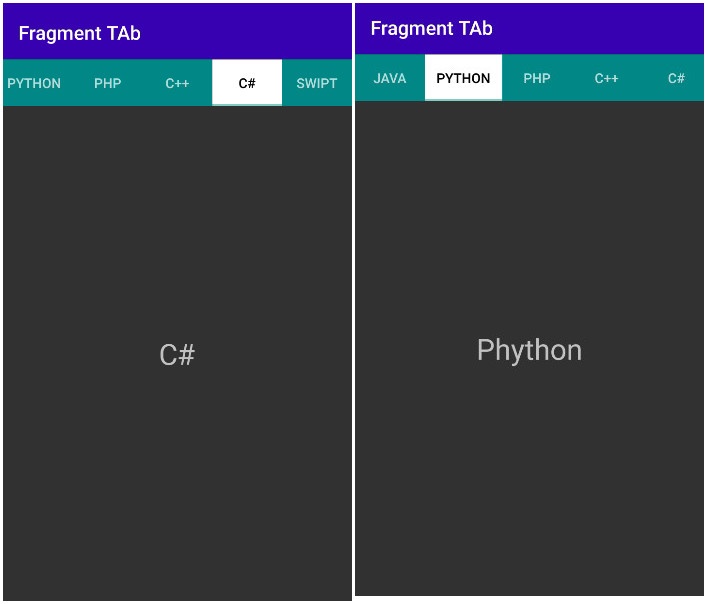

Return inflater.inflate(R.agment_tab2, container, false) Public class Tab2 extends Fragment View onCreateView(LayoutInflater inflater, ViewGroup container, Return inflater.inflate(R.agment_tab1, container, false) We are creating an application which will have three tabs, So let’s define three fragment and their layouts.Ĭlass tab1 extends Fragment View onCreateView(LayoutInflater inflater, ViewGroup container, So now your style file will look like below code Go to style.xml file and change the parent of theme which you are using in your app.Change parent with “”. Now since we will be using Android Toolbar and TabLayout classes to show tabs, lets remove the action bar from layout by using styles, I have created DemoTabLayout.Īfter create a new project, First of all we have to need include design libraries in the dependencies section of our adle file so include this libraries in your adle file by below line. Open Android Studio and create a new project. User can swipe the tabs quickly as you can see in the image below.Ĭreating a new project and add necessary libraries We can display more screens in a single screen using tabs. So in this TablLayout Example we will see how we can implement it in our android application.Īndroid TabLayout provides horizontal layout to display tabs. One of the component of material design is TabLayout. Though we can still use this design pattern for the older versions (>4.0) by using the support libraries. This is material design and it came with Android Lollipop (5.0). It will require to override two methods.If you are using the latest android application then you have noticed that now days android is following a design pattern. We are creating an IntroViewPagerdapter class here and implementing the FragmentStatePagerAdapter class. We need a adapter class which will do most of our work for the ViewPager like counting how many fragments to attach, creating the instance of those framgments etc.Ħ. Inflater.inflate(R.agment_intro_screen, container, false)!!ĥ. Override fun onCreateView(inflater: LayoutInflater, container: ViewGroup?, savedInstanceState: Bundle?) = We are creating a IntroFragment class here and in onCreate() method we are binding the layout with this class. Now, we need to create a fragment class and bind this fragment layout with it. Let’s create a layout for the fragment.Ĥ. We will require four different colours for the background of 4 different fragments.ģ.


Also, setup Constraint Layout as we did in the earlier chapters if not configured. We are giving “MindOrks Intro” as the name of our app. To develop this app, you need to complete our previous chapters where you can learn about fragments and activities. Yes, we are going to create an app which will have a colourful introduction slider.


 0 kommentar(er)
0 kommentar(er)
